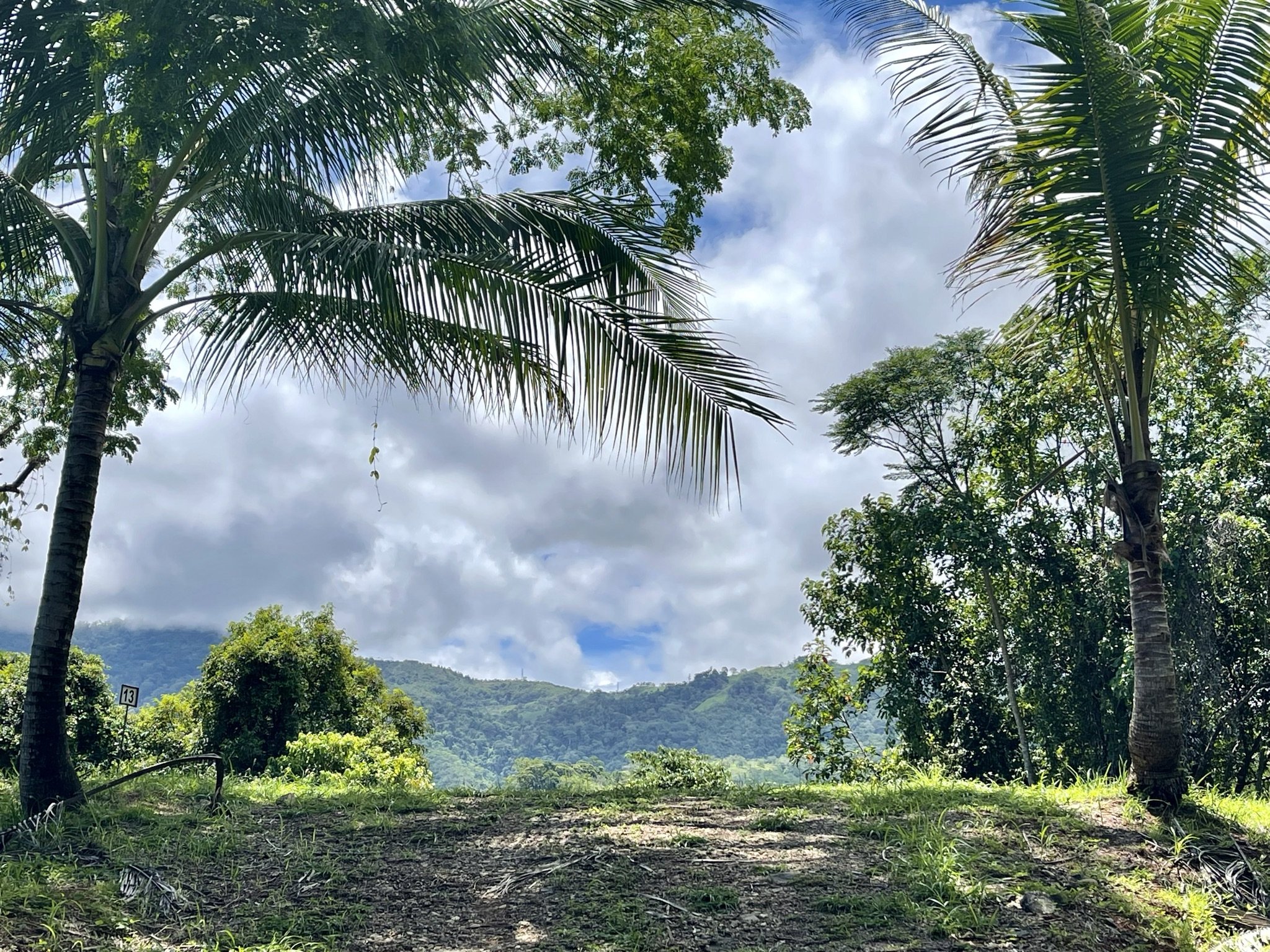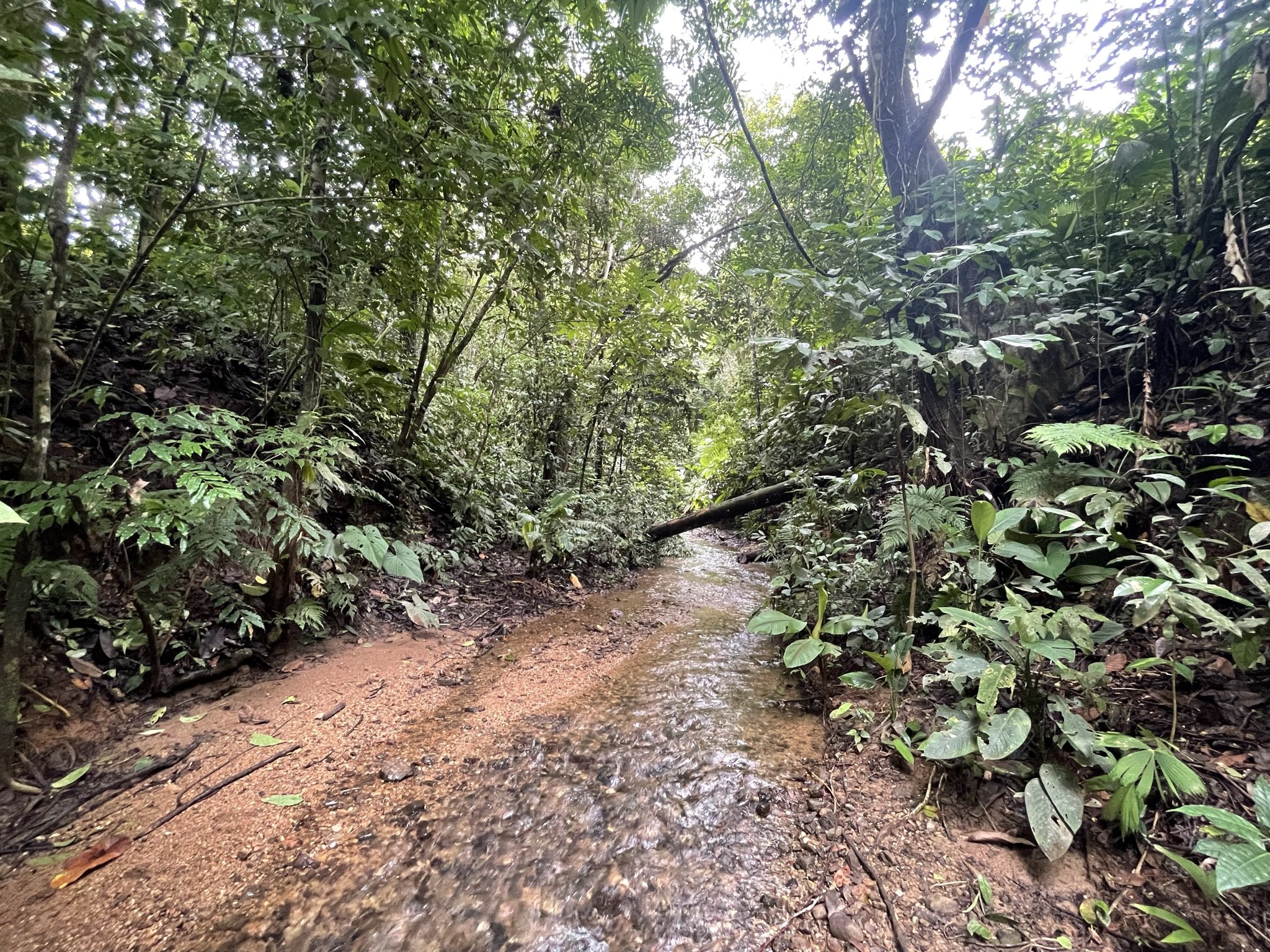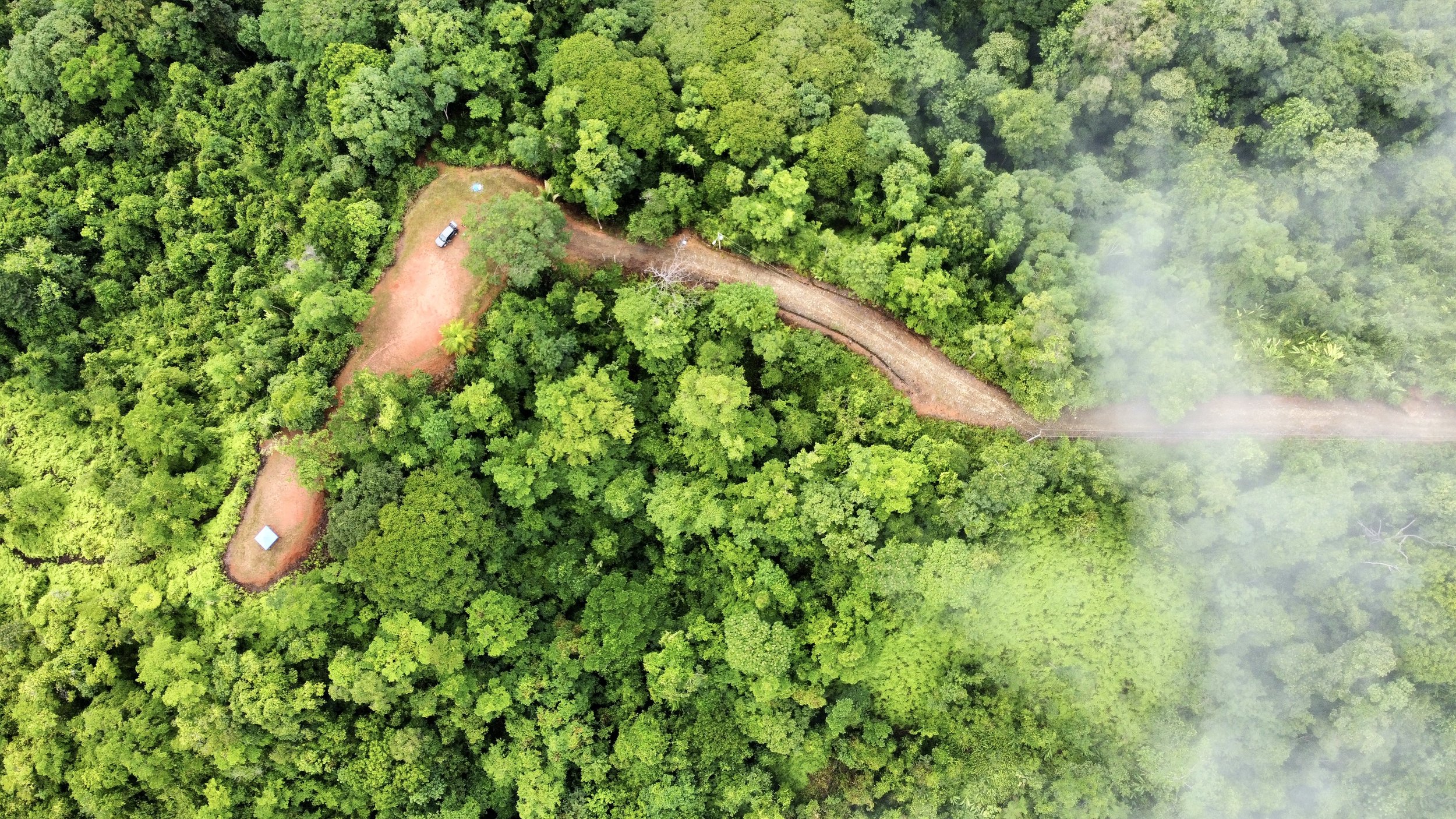welcome to the jungle: an intro to lot 13
Friends, I want to tell you about my land.
I use the word “my” loosely, the way one might say “my family.” It’s a relational term, not a term of ownership. As far as the government of Costa Rica is concerned, my husband JP and I “own” the land. But let’s face it. It’s absurd to think a pair of 34-year-old humans could “own” something as ancient as a rainforest, which was here long before we were and will continue long after we’re gone.
An aerial view of Lot 13, “my” land in the traditional territory of the Boruca people
Property law theory is one of my great loves (yes really) so I’m acutely aware of how problematic it is that two wealthy foreigners–especially me, a white lady descended from colonizers–“own” land that is not indigenously ours. Lot 13 is in the traditional territory of Costa Rica’s indigenous Boruca tribe, who still have a village not far south of us. It’s a tragic history that led to these 13 acres falling into my possession instead of remaining under the protection of ancestral caretakers, and I’m indebted to the generations who cared for this land before me. I wish the colonialist system of land ownership were something other than what it is, but as with so many of the world’s modern systems, I’m left with little choice but to operate under rules that make me morally uncomfortable. There is nowhere in the world I could own land that has not been taken from its indigenous caretakers, including the United States.
Because of that legacy, I use words like “own” cautiously. To use a common legal metaphor, I don’t see myself as a landowner in fee simple with a full bundle of property rights sticks but rather as a caretaker trying her best to do right by the land and its ancestral people. JP and I talk often about how “owning” this land is less like buying a house in the US and more like adopting a child. It’s a privilege to lovingly provide care to this land for the rest of our lives.
The palm-lined entrance to Lot 13
Welcome to Lot 13
Lot 13–so named because it was the thirteenth lot the previous owner subdivided out of the original “finca madre”–is, by coincidence, 13 acres in total. Turns out 13 acres is a lot of land, about 13 football fields’ worth. Most of Lot 13 is heavily forested and on an incline so steep that parts of it are practically unnavigable. That means most of our land remains a delightfully unexplored mystery. Currently, the two areas easily accessible to humans are 1) the build site, a 270-foot-long flattened hilltop at the entrance to the property, and 2) the roughly kilometer-long creek, or “quebrada,” that makes up a good chunk of the property line.
The quebrada that runs deep in the jungle on Lot 13
We spend most of our time on the build site, for the simple reason that we can drive our car there. One end of the figure-eight-shaped site has primary rainforest (meaning it’s never been cut down) and a hiking trail leading down to the creek. It’s a prime spot for wildlife-watching, and we frequently spot creatures such as green parrots, toucans, squirrel monkeys, and poison dart frogs; Pamela, our trail camera, has caught footage of coatis, peccaries, angry capuchin monkeys (more on that later) and even an ocelot!
The Lot 13 build site. The hiking trail is on the upper end with the road; the valley view is on the lower end
Two great currassows in the rainforest near the hiking trail, courtesy of Pamela the Trail Camera
The other end of the build site has a stunning panoramic valley view overlooking the jungle. We see tons of birds here, too, and it makes for amazing weather-watching. The weather in Costa Rica is all micro-climates, so you can often watch it pouring rain on the other side of the valley while it remains bright and sunny over Lot 13. Because of that, we’re frequently treated to some spectacular rainbows.
The panoramic valley view at sunset.
A double rainbow over our campsite, “Casa Producto Minimo Viable,” at the valley end of the build site
The quebrada, meanwhile, is the most magical part of the property. It’s surrounded by dense rainforest and the shallow water is often bright turquoise blue. It makes for fabulous but not-too-strenuous hiking…at least, as long as you avoid the troop of angry capuchin monkeys very intent on chasing you out of their territory (more on that in a future post).
Angry capuchin monkey selfie, courtesy of Pamela the Trail Camera
Where in the world are we?
Sometimes people ask me for our address. But in Costa Rica, an “address” is less an address and more a description of where something is in relation to other things, like “200 meters north of the soccer field” or “next to the bank.” Often the streets don’t have names. Sometimes they have multiple names that nobody can agree on. Rarely do they have street signs.
Lot 13 and the surrounding area from above. And yeah, that’s the Pacific Ocean in the background!
To add to the confusion, we, uh, aren’t exactly sure what town we’re in. The closest town tourists are likely to know is Ojochal (oh-ho-chawl), a lovely expat haven about 15 minutes north of Lot 13. About 5 minutes south is Ciudad Cortes, a mid-size Tico town that gets few enough gringo visitors that I turned a lot of heads when I lived there last summer. Closest to us is the small Tico village Coronado, which for the longest time had a sign before its one-lane bridge warning “puente en mal estado,” as if that’s somehow helpful. San Buena–which we think is the same place as San Buenaventura, but that’s unconfirmed–is the village our municipal water comes from. East of us, further into the mountains, is Chontales, a neighborhood of fancy vacation homes. Our neighborhood group chat is called “Tawal neighbors,” but I don’t think anyone really knows exactly what or where Tawal is, our entire neighborhood included. Lacking a better option, JP has affectionately dubbed our area “SoJochal” for “south of Ojochal.”
So where in the world are we? The best way to figure it out is to come see it for yourself!
Pura vida,
-Chaplain Emily
Me, JP, and Lot 13, shortly after closing on the property in June 2021.









